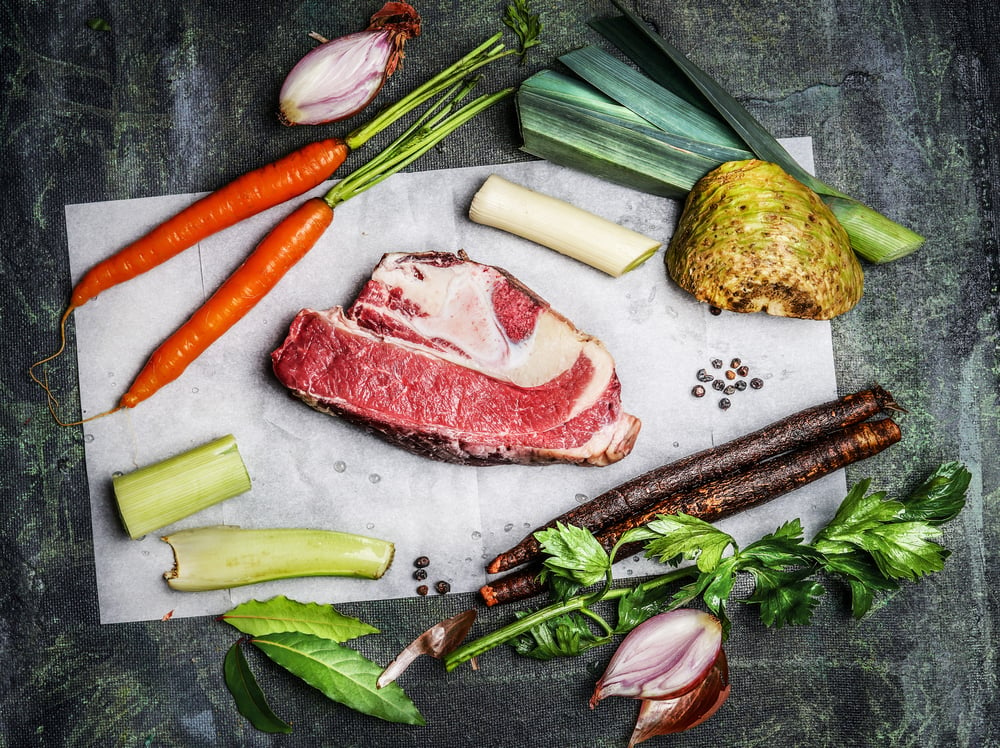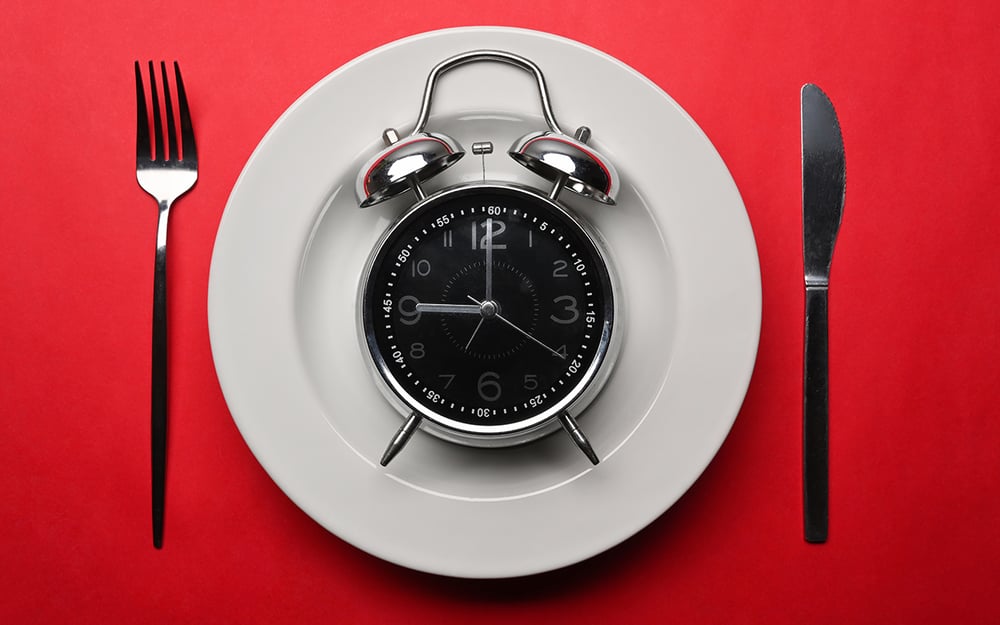
Issue 216
April 2025
The science has spoken, and Ray Klerck’s translated it from lab coat to fight camp. This is the research-based guide to eating like a pro, cutting like a surgeon, and showing up on fight night ready to dominate.
Your diet is either a weapon or a weakness. There was a time when fighters treated their nutrition like a dirty pair of hand wraps - ignored until something started to stink. Eat whatever. Cut later. Sweat into black trash bags until the hallucinations kick in and then you’re dialed in to fight. The problem? That old-school suffering doesn’t make you tough. It just makes you tired, slow, and one round away from a KO burrito. And now, science has called time on this nonsense. Earlier this year, the International Society of Sports Nutrition (ISSN) dropped the most comprehensive, no-BS guide to eating, cutting, and recovering for MMA and combat sports. It’s not a menu of misery. It’s a scientifically proven blueprint for fueling fight camp, shedding weight without shedding sanity, and rehydrating so you don’t stiffen up like a forgotten rotisserie chicken during your walkout. And it’s backed by all the biggest names in fight science and the UFC Performance Institute. This isn’t some Instagram guru telling you to chew gum and cry into a rice cake. Instead, this is the best longitudinal evidence we’ve ever had on how to win fights by nourishing your body from the inside out.
EAT TO ENTERTAIN
Before the cameras roll and the dreams of victory kick in, most of a fighter’s life is lived on sweaty mats, not standing on a scale. That’s why eating out of camp shouldn’t feel like chewing on regret and cardboard. According to the ISSN research, the ideal place for everyday training sits around 3–5g of carbs per kilo to fuel sessions, 1.6–2.4g/kg of protein to hold onto your hard-earned muscle, and 0.5–1g/kg of fats to keep your hormones from flatlining. Then there’s your micronutrient game. This includes heavy hitters like iron, calcium, B12, and vitamin D, which are the backstage crew keeping your energy, bones, and immune system flexed. Skimp here, and you’re just dry-scooping fatigue. The fix? Nothing sexy. Just colorful veg, proper hydration, and meals that didn’t come from a shaker bottle. Consistency beats chaos. The sharper you eat in the shadows, the harder you hit in the spotlight.
ENTERING CAMP LIKE A PRO
Contenders don’t wait until the boss man announces a fight to panic about the consequences of their excessive Dominos tab. Instead, those who are successful in fights enter camp no more than 12–15% above their target division, a range that allows for smart, structured weight descent without sacrificing performance or health. According to the research by the ISSN, this is the Goldilocks zone that lets athletes train hard, recover well, and avoid flaming their testosterone scores into a pile of burnt-out ash. Walk-around weight matters. It’s not just what you carry. It’s how well you can carry it under stress. Trying to ditch 20% of your body mass in eight weeks? That’s not cutting. That’s chaos in a hoodie. Off-camp nutrition should cater to a build phase, where lean mass, aerobic capacity, and movement economy all get sharpened. The research suggests carbs should fuel sessions (3–5g/kg), protein should protect your muscles (1.6–2.4g/kg), and fats support hormones and satiety (0.5–1g/kg). It’s basic math, but athletes who treat food as a reward instead of a tool may come unstuck.
GRADUAL CUTS WIN BELTS, NOT BRAIN FOG
The most common fight camp nutrition mistake? Confusing discipline with masochism. There’s a big difference between suffering for greatness and just suffering because you didn’t plan. The ISSN research says fighters should aim to lose around 0.5–1% of body weight per week. Maxim. That’s the flashpoint where performance holds, lean mass stays intact, and your brain doesn’t feel like it’s thinking through exhaust fumes. Cut any faster, and things start rattling like a Dodge Neon going 90mph uphill. Hormones get off balance. Mood plummets. Sleep goes sideways. Your body pretty much turns against you. Worse still, there’s no solid science showing huge weight cuts give you a performance edge. This was supported by a 2025 psychological review published in Frontiers in Sports and Active Living. These researchers called out this misconception where fighters think cutting gives them an advantage, but the data doesn’t back it. What it does give them is stress, emotional instability, and a built-in excuse for losing. Smarter cuts create better performance. That’s the real mental edge.

FIGHT WEEK: STOP THE SUFFERING OLYMPICS
When weigh-ins are 24–36 hours before the fight, you’ve really only got time to make strategic moves, not desperate ones. Here’s how the ISSN says to do it right: use water loading early in the week to trigger flushing, taper fiber intake to shrink gut contents, and restrict carbs slightly to reduce water-bound glycogen. That combo can safely shave 1–3% of your body weight without killing your output. Heat-based weight cuts – such as sauna, hot baths and mummy wraps - should only come into play if you’ve done everything else and still have a little bit of tub to jettison. The research suggests you should aim to lose no more than 4% of your total body mass in the final 24 hours. It should be a tactical cut, not a crash course in misery. You’re not proving toughness. You’re prepping for performance. The old mantra of suffer now, shine later mantra is garbage when it leaves you flat, foggy, and one scramble away from fainting in the clinch.
REFUEL LIKE YOUR LIFE DEPENDS ON IT
Step one after weigh-ins: fix the damage. You need to regain 10% of your body mass, rehydrate cells, refill glycogen stores, and do it all without wrecking your gut. Start with oral rehydration solutions where you drink 1-1.5 liters per hour with added sodium (50–90 mmol). Once the fluid is back into your system, bring in carbs at a rate of ≤60g/hour of fast-digesting sources. Unless you enjoy bathroom roulette with the porcelain Uzi, you may want to avoid fiber and fat at this stage. The aim is clean, efficient rehydration and refueling. Carbs are your comeback fuel: go up to 8–12g per kg if you’ve depleted glycogen heavily, or 4–7g/kg for moderate cuts. Get this wrong, and you might enter the fight like a sack of wet laundry. Do it right, and you’ll feel fresh, crispy, and ready to impress.

YOUR BRAIN CUTS WEIGHT TOO
Manipulating what you eat isn’t just about carving down your body. It chips away at your head, too. According to the Frontiers study, fighters who smash the scale with rapid cuts are more likely to cop anxiety, low self-esteem, fatigue, and full-blown mood swings than they are to win the Fight of the Night bonus. That’s not grit. That’s a slow roast of your sanity. Adding to that is a fresh review in Sport Sciences for Health, which found the deeper the cut, the darker the mood. There’s more depression. More emotional nosedives. A higher chance of mentally checking out before you’ve even touched gloves. Sure, burnout didn’t show up in the stats, but when you’re flatlined, fragile, and fighting your own reflection in the mirror, does it matter what label we slap on it? These aren’t red flags. They’re fireworks. The fix? Gradual cuts. Clear goals long before a fight is announced. A nutrition plan that doesn’t require duct-taping your dignity to hot source. The science has spoken. Starving is not a strategy. Show up sharp, fueled, and in control, not cracked, cramping, and clinging to the scale because fights have always been won and lost in the kitchen.
...











